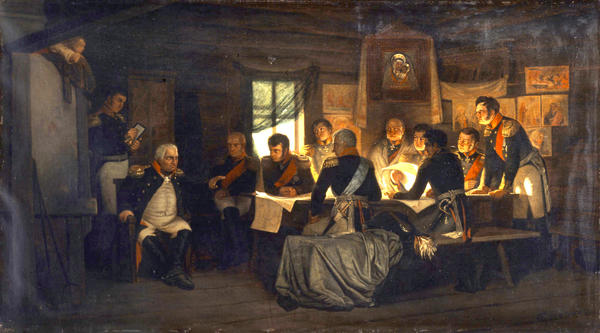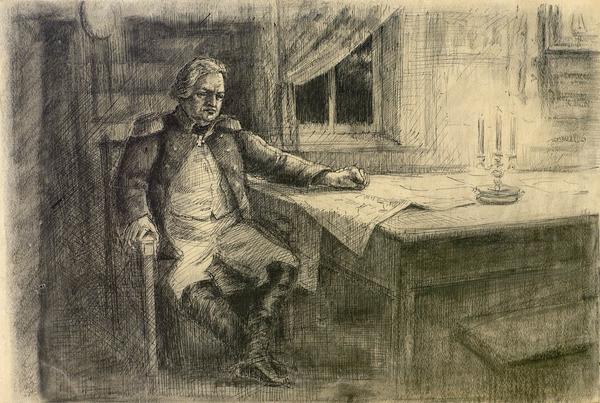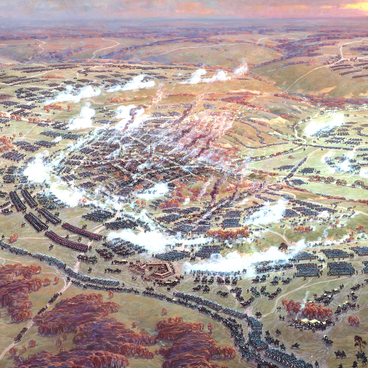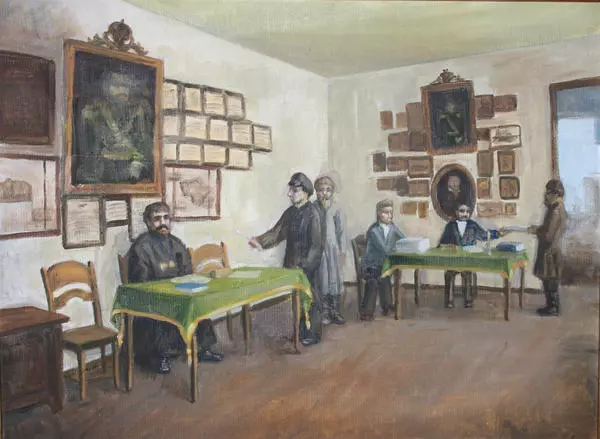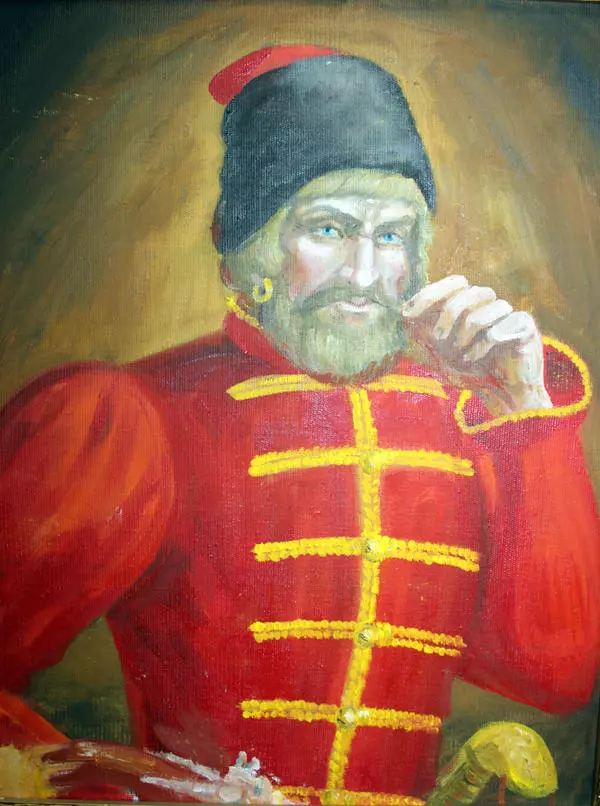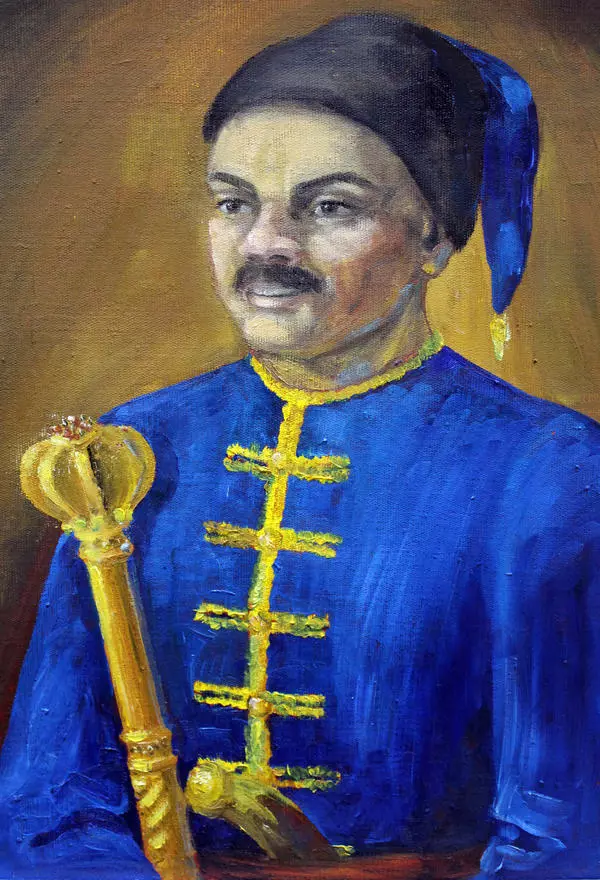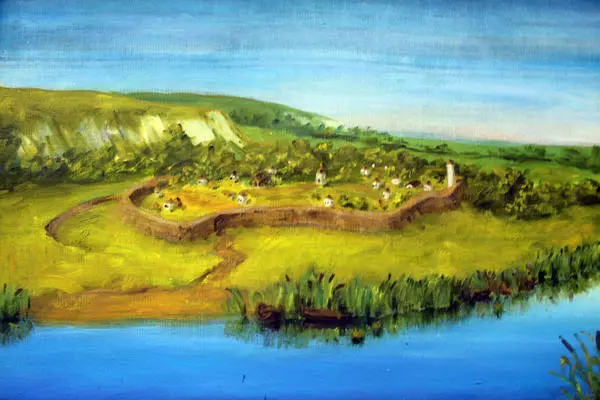On September 1(13 old style), 1812, a military council took place in the village of Fili near Moscow: Commander-in-Chief Kutuzov convened the military leaders to decide on the fate of Moscow.
Aleksey Kivshenko created this artwork in 1880 as illustration to ‘War and Peace’ novel. As well as Lev Tolstoy he was more interested in the psychology of the meeting participants than in historical truth. The Battle of Borodino Panorama Museum displays one of its copies painted by the artist’s apprentice.
Lev Tolstoy described the Council through the eyes of Malasha, a six-year-old daughter of the house owner. The girl is present in the painting too — she lies on the brick stove watching the whole scene from above. In fact, a child would have never been admitted to a military council.
The painting features General Field-Marshal Kutuzov settled in an armchair beside the stove. To the left there are his Lieutenant Generals sitting on a bench near the window — Petr Konovitsin (proposing to attack the enemy near Moscow) as well as Nikolay Rayevsky and Andrey Osterman-Tolstoy (the opponents). Nikolay Rayevsky famously said, “It”s not Moscow, which is crucial for the rescue of Russia. Therefore we should aim to preserve our forces. I suggest leaving Moscow without a fight”.
In line with Lev Tolstoy’s description, Michael Andreas Barclay de Tolly, General of the Infantry, stays in the icon corner. He strongly supported the idea of surrendering Moscow without a fight. The general wrote in his memoirs: ‘I asserted that preserving the Army was vital for the rescue of our Motherland’. Lieutenant General Uvarov who also ‘supported the retreat in the single word’ is sitting next to him.
Dmitry Dokhturov, General of the Infantry, is pictured to the left of Fedor Uvarov. He was strong against leaving Moscow without a struggle and later on wrote to his wife, ‘Thank God I am in the full of my health, but I am in despair because Moscow is left unprotected. How awful! <…> It”s a disgrace that Russians have to surrender their Motherland without firing a single bullet or fighting’.
Major General Yermolov also spoke in favor of fighting for Moscow. So, he leans his arms on the table (the artist chose this position to convey the general’s indignation). And yet his officially documented remark evidences that he had doubts — “Do we know the roads for our convoys to head towards the enemy?”
Colonel von Toll (on the right) and Infantry General Bennigsen are sitting with their backs towards viewers. The general insisted on waiting for the enemy near Moscow and giving a battle. Lev Tolstoy clearly disliked Leonty Bennigsen as Mikhail Kutuzov’s opponent in the most critical disagreements.
Malasha viewed the conflict between the two commanders as follows:‘It seemed to her that it was a matter only of a personal struggle between Grandpa and “Long-skirts, ” as she called Bennigsen. She saw that they were angry when they spoke to each other, and in her heart she took Grandpa”s side”.
Aleksey Kivshenko created this artwork in 1880 as illustration to ‘War and Peace’ novel. As well as Lev Tolstoy he was more interested in the psychology of the meeting participants than in historical truth. The Battle of Borodino Panorama Museum displays one of its copies painted by the artist’s apprentice.
Lev Tolstoy described the Council through the eyes of Malasha, a six-year-old daughter of the house owner. The girl is present in the painting too — she lies on the brick stove watching the whole scene from above. In fact, a child would have never been admitted to a military council.
The painting features General Field-Marshal Kutuzov settled in an armchair beside the stove. To the left there are his Lieutenant Generals sitting on a bench near the window — Petr Konovitsin (proposing to attack the enemy near Moscow) as well as Nikolay Rayevsky and Andrey Osterman-Tolstoy (the opponents). Nikolay Rayevsky famously said, “It”s not Moscow, which is crucial for the rescue of Russia. Therefore we should aim to preserve our forces. I suggest leaving Moscow without a fight”.
In line with Lev Tolstoy’s description, Michael Andreas Barclay de Tolly, General of the Infantry, stays in the icon corner. He strongly supported the idea of surrendering Moscow without a fight. The general wrote in his memoirs: ‘I asserted that preserving the Army was vital for the rescue of our Motherland’. Lieutenant General Uvarov who also ‘supported the retreat in the single word’ is sitting next to him.
Dmitry Dokhturov, General of the Infantry, is pictured to the left of Fedor Uvarov. He was strong against leaving Moscow without a struggle and later on wrote to his wife, ‘Thank God I am in the full of my health, but I am in despair because Moscow is left unprotected. How awful! <…> It”s a disgrace that Russians have to surrender their Motherland without firing a single bullet or fighting’.
Major General Yermolov also spoke in favor of fighting for Moscow. So, he leans his arms on the table (the artist chose this position to convey the general’s indignation). And yet his officially documented remark evidences that he had doubts — “Do we know the roads for our convoys to head towards the enemy?”
Colonel von Toll (on the right) and Infantry General Bennigsen are sitting with their backs towards viewers. The general insisted on waiting for the enemy near Moscow and giving a battle. Lev Tolstoy clearly disliked Leonty Bennigsen as Mikhail Kutuzov’s opponent in the most critical disagreements.
Malasha viewed the conflict between the two commanders as follows:‘It seemed to her that it was a matter only of a personal struggle between Grandpa and “Long-skirts, ” as she called Bennigsen. She saw that they were angry when they spoke to each other, and in her heart she took Grandpa”s side”.

